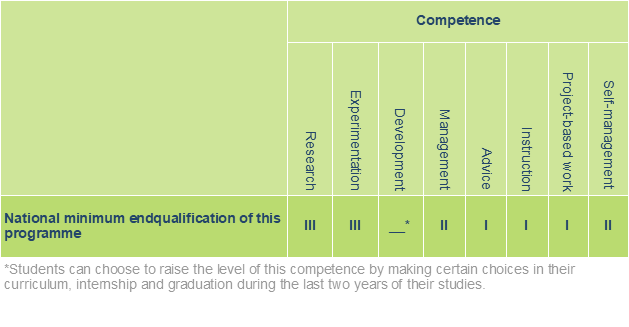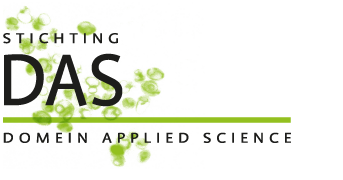Bioinformatics is the field where computer and information technology are used to collect, store, make accessible, analyse, interpret, and disseminate data from biomedical and/or biological research.
Key areas within this field include genomics, transcriptomics, proteomics (including protein modelling, structure, and function), metabolomics, and the integration of data from these areas. Bioinformaticians work in biological and biomedical research at scientific institutions, as well as in companies within the pharmaceutical, biotechnology, food, and plant breeding industries.
National Educational Programme

Body of Knowledge & Skills
Knowledge
Biology
- General biology, including organisms, tissues, evolution.
- Cell biology aspects including cell structure, energy supply, transport, cell-cell communication, mitosis, meiosis.
- Genetics: DNA structure, replication, coding, transcription, translation, mutations, inheritance, homology, population genetics, gene regulation, signal transduction pathways.
Chemistry
- General chemistry including molecules, reactions, kinetics.
- Biochemistry: building blocks, macromolecules (carbohydrates, lipids, proteins, enzymes), metabolism / metabolic pathways.
Skills
Informatics
- Programming in different programming languages. At least Python, but also at least two other languages such as R, Java, Bash, Javascript.
- Programming concepts: data types, data structures, control structures, functions, modular approach, object-oriented programming, regular expressions.
- Reproducible dependency management: e.g. pip, conda, Gradle, Maven.
- Version management: for example, with git
- Web application development: e.g. HTML, CSS, Javascript, Flask, Shiny, Django, Spring Boot, Panel.
- Databases: relational design, implementation, querying and programmatic interaction (SQL).
- Workflow design and implementation: e.g. Snakemake, Galaxy
- Manage own Linux environment: use of Shell commands
Bioinformatics
- ~omics and (NGS) sequencing technologies: nucleotides, proteins, metabolites, metagenomes, epigenetics.
- Application areas of NGS technologies: e.g., assembly, mapping, gene expression analysis with RNA-seq, phylogeny, variant analysis.
- Algorithmic aspects of sequence analysis: such as alignment, assembly, mapping, graphs, scoring matrices, annotation of sequences.
- Practical use of bioinformatics tools and databases: e.g. BLAST, Genome Browsers, Genbank, Uniprot, KEGG, etc.
Statistics & Data Analysis
- Experimental design: e.g., power analysis, sampling strategy, measurement accuracy, validity.
- Descriptive statistics: embedded in exploratory analysis. For example, mean, median, standard deviation, range, interquartile range.
- Visualizations: e.g. box-plot, histogram, scatterplots, etc.
- (Hypothesis) tests: e.g. t-test, ANOVA, non parametric, etc.
- Modeling: e.g. linear and nonlinear regression, multivariate, PCA.
- Machine learning: classification and unsupervised methods. For example UMAP, Clustering, Decision Trees, Naive Bayes, k-Nearest Neighbour, Neural Networks, SVM.
The Body of Knowledge and Skills is a summary of graduates’ basic knowledge and basic skills which has been prepared by the HBO-programmes in consultation with the professional field. These are obtained during the first two years of education.
Institutions and professional fields
Institutions offering the programme keyboard_arrow_down
- Hanze University of Applied Sciences, Groningen
- HAN University of Applied Sciences
Illustration of professional field keyboard_arrow_down
Professions, Roles, and Positions for Bachelor’s Graduates
These are primarily found in the following professional domains. Examples for each domain are provided below:
Research and Development
- Analysing large datasets from high-throughput laboratory research
- Scientific programmer
Analytical Laboratory and Production
- Management of gene and protein databases
- Analysing gene sequencing data streams
Commerce, Service, and Consultancy
- Biotechnological data consultant
Typical course books keyboard_arrow_down
- Campbell Biology, L.A. Urry, M.L. Cain e.a.
- Essentials of Genetics / Concepts of Genetics, W.S. Klug, M.R. Cummings e.a.
- General, Organic and Biochemistry, K.J. Denniston, J.J. Topping e.a.
- Starting out with Python, T. Gaddis
- Data Structures and Algorithms using Python, R.D. Necaise
- Bioinformatics and Functional Genomics, J. Pevsner
- Using R for Introductory Statistics, J. Verzani
- Data Mining, I. Witten, E. Frank e.a.
- Statistics for the Life Sciences, M.L. Samuels, J.A. Witmer e.a.
The list of typical textbooks serves as an illustration to give an impression of the level at which the subject is taught in the study programme.
